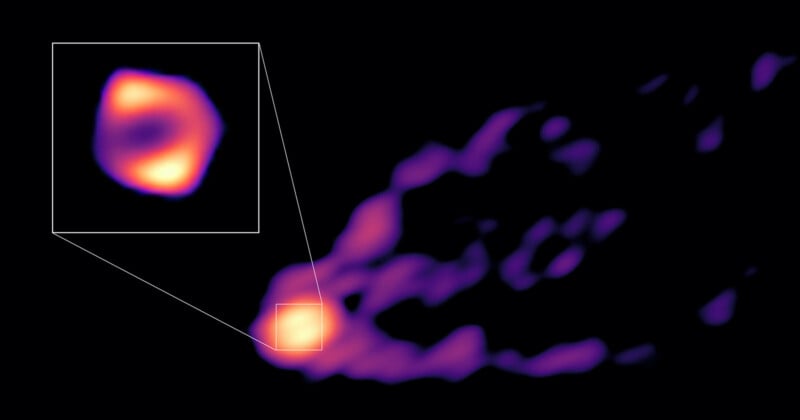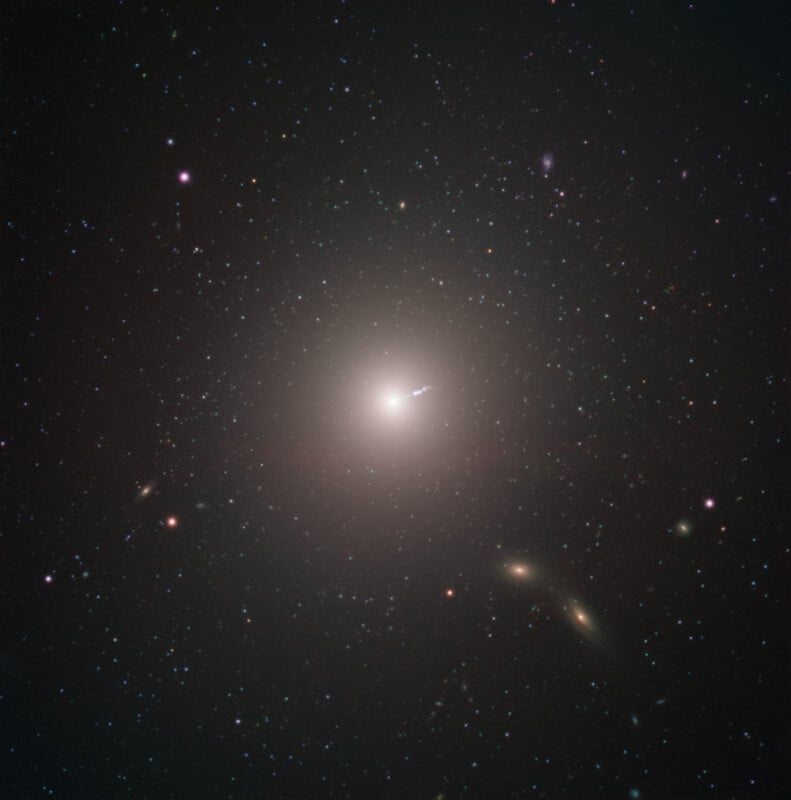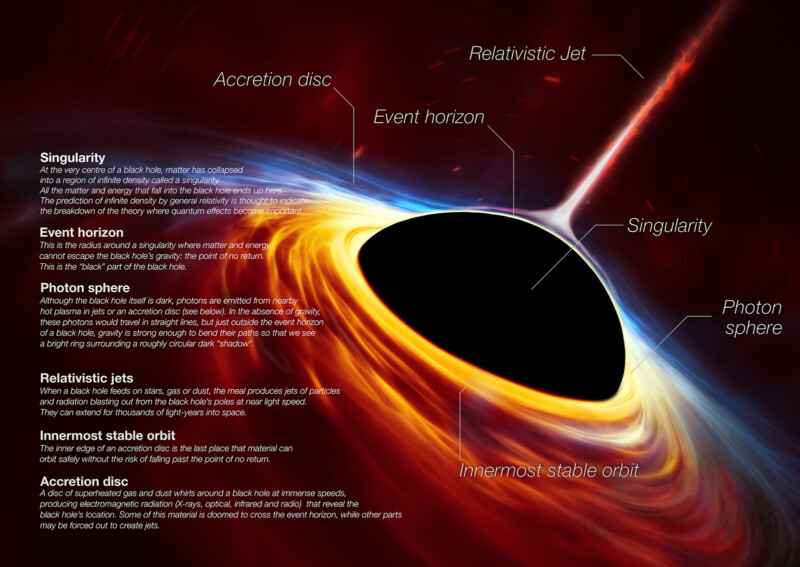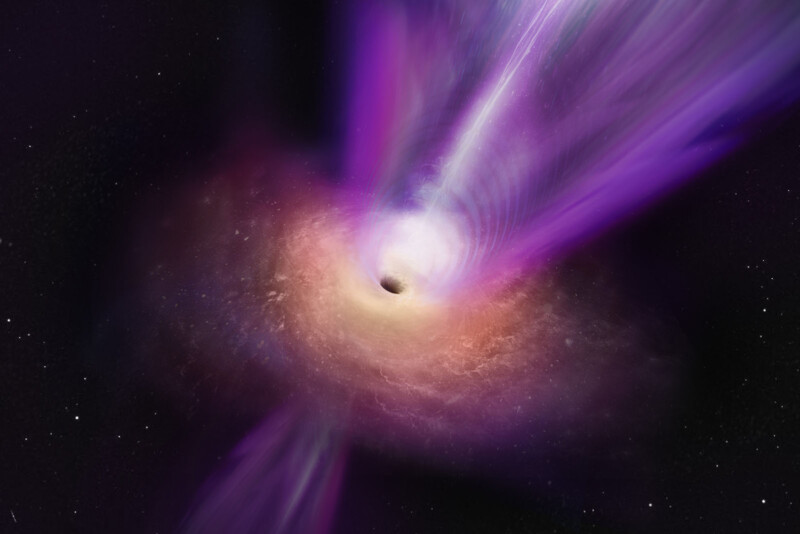New Wide-Angle Image Shows the Power of Supermassive Black Hole

Radio astronomers have captured a novel wide-angle image of the famous giant black hole at the center of the galaxy Messier 87 (M87).
M87’s black hole is a popular target for astronomers. In 2019, the Event Horizon Telescope (EHT) collaboration unveiled the first photo ever captured of a black hole. The same collaboration of more than 200 astronomers shared an incredible polarized view of the M87 black hole two years later. A new group of researchers developed a clever machine-learning technique to improve that first iconic black hole image with artificial intelligence (AI).
As New York Times reports, now a third group of astronomers has taken a fresh look at Messier 87, the giant elliptical galaxy 55 million light-years from Earth that is a spectacularly powerful source of radio energy.

This third international team, led by Ru-Sen Lu from the Shanghai Observatory in China, has utilized a different global network of observatories, including the Global Millimeter VLBI Array (GMVA), the Atacama Large Millimeter/submillimeter Array (ALMA) in Chile, and the Greenland Telescope. This revised array has captured M87 with a fresh perspective, showing a more zoomed-out image that shows, for the first time, the base of the heavily observed jet of energy and particles that shoots across space from M87’s center.
The incredible new photo was published in Nature earlier this week. The paper describes the team’s use of a longer wavelength than the EHT team, 3.5 mm instead of 1.3 mm, to better show the jet of energy emerging from near the black hole.
“At this wavelength, we can see how the jet emerges from the ring of emission around the central supermassive black hole,” explains Thomas Krichbaum of the Max Planck Institute for Radio Astronomy.

“We know that jets are ejected from the region surrounding black holes, but we still do not fully understand how this actually happens. To study this directly, we need to observe the origin of the jet as close as possible to the black hole,” says Lu.
Compared to the original EHT image, the ring observed by Lu’s team is roughly 50 percent larger. The GMVA network comprises 14 radio-telescopes in Europe and North America, plus two more facilities, the Greenland Telescope and ALMA.
ALMA itself includes 66 antennas in Chile. The use of ALMA proved vital for the research. “Thanks to ALMA’s location and sensitivity, we could reveal the black hole shadow and see deeper into the emission of the jet at the same time,” Lu explains.
The new observations outlined in Nature were conducted in 2018. The team intends to perform future observations using the same network to further study how black holes can launch powerful energy jets.

“We plan to observe the region around the black hole at the center of M87 at different radio wavelengths to further study the emission of the jet. The coming years will be exciting, as we will be able to learn more about what happens near one of the most mysterious regions in the universe,” says Eduardo Ros from the Max Planck Institute for Radio Astronomy.
Additional images and extensive scientific details are available in the team’s paper, “A ring-like accretion structure in M87 connecting its black hole and jet.”